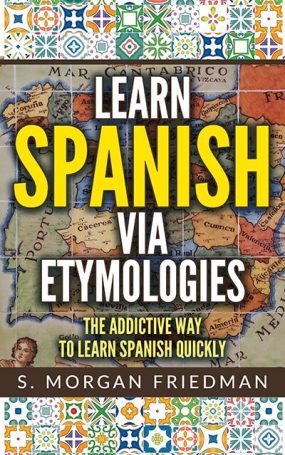Ah, one of our all-time favorite patterns and examples: leche, the common Spanish word meaning, “milk.”
Leche is a first cousin of the English lactose via a very interesting pattern: the -ct- to -ch- pattern.
Both come from the same Latin root, lactatio (literally, “suckling.”) The -ct- in that root remained unchanged as it entered English (because it entered via the sophisticated French) but that sound almost always turned into a -ch- sound as Latin evolved into Spanish. Thus the l-ct maps to the l-ch almost exactly.
Many other awesome words follow the same pattern: think octagon/ocho, for example. Some more coming up soon (or see the pattern page linked below).


